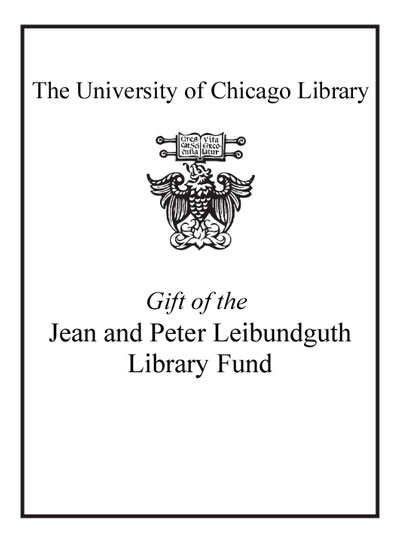Review by Choice Review
The Oxford Companion to the Book (OCB) evidences clear objectives, careful editing, and an attractive format. Part 1 features 51 signed, 2-13 page essays. Nineteen cover general topics such as paper, and 32 address national/regional book history. The historical point of view is stressed throughout. More than half of the "Children's Literature" essay reflects pre-1900 developments. The "Electronic Book" traces its subject back to 1945 and takes it forward to Amazon's Kindle and Apple's iPhone. Selective bibliographies follow each essay, and monochrome illustrations occasionally highlight text. The 850-page A-Z section is organized in typical "Oxford Companion" style, emphasizing information rather than critical analysis. Entries cover individuals living and dead (publishers, book dealers, bibliographers, illustrators, printers, librarians, and collectors) and institutions (book clubs, libraries, learned societies, and more). Entries range from one sentence to 2,000 words; most have reference citations. The editors clearly had fun with some of the entries: a "book runner" is a "peripatetic second-hand bookseller who may be seen flitting from shop to shop, buying in one, selling in another."With such a broad resource, quibbles are inevitable. Omissions include the scholarly book historian Hellmut Lehmann-Haupt; Sol Malkin, longtime editor of AB Bookman's Weekly; and the Brick Row Book Shop, now in San Francisco. On the whole, however, this set is above reproach. The editors have produced an excellent indexing and cross-referencing system to make the task of finding specific information easier. A 30-page thematic index is, according to the editors, an "intellectual cartography" to the whole. The general index covers both essays and A-Z entries. The OCB is aimed at book collectors, booksellers, librarians, bibliographers, printers, archivists, general readers, and specialists. It provides a global approach to the world of the book and is, in every way, a monumental achievement. Summing Up: Highly recommended. Researchers/faculty, professionals, and general readers. D. C. Dickinson emeritus, University of Arizona
Copyright American Library Association, used with permission.
Review by Booklist Review
*Starred Review* The only surprising thing about this fine set is that the topic hasn't been tackled before by the Oxford Companion series. At a time in our history when the very future of the book is so often called into question, Oxford, as usual, produces what will likely be for the foreseeable future the final word on the subject, and in such a concise format. According to the introduction, this is a set that seeks to represent in a single work the world of the book as it is known at the close of the first decade of the 21st century. Admitting that the book' . . . is not really an adequate emblem of many material manifestations of text, the editors point out that the idea that bibliography and book history are not inimical . . . but mutually enriching and deeply interrelated undertakings has been one of this project's primary foundations. The work is divided into two parts. The first, a series of 51 essays, opens with an overview of various topics ( Paper, Children's Books ) before settling on 32 essays on the history of books in various regions ( The History of the Book in Italy, The History of the Book in Korea ). History of the Book in America is the longest essay at 18 pages; Technologies of Print (15 pages) is the longest of the nongeographic entries. All include bibliographies. Following the essays are more than 5,000 alphabetically arranged shorter entries. Although not all of these have bibliographies, many do even the 39-word entry Lubok (a Russian broadside). Cross-references are duly noted to sections of the essays as well as to other entries. Virtually anything dealing with the book industry is covered, ranging from the paper used and the printing process to terminology (Private presses); people (Greenaway, Kate); publications (Kirkus Reviews); libraries (Wales, National Library of); and publishers (Phaidon Verlag and, yes, Oxford University Press). Entries vary from a few sentences to some 2 1/2 pages (Scientific books and journals). The set is liberally illustrated with about 170 illustrations throughout. Oxford has gone out of its way to make the work as accessible as possible. It opens with a Thematic Index of Entries and a 2-page Notes to the Reader, which illustrates how entries are arranged and forms of transliteration used. The set concludes with an index, which the introduction notes is not a common feature of Oxford Companions, but the scope of this project and the mix of long essays and short entries . . . suggested the need for additional guidance for readers. Highly recommended for academic and large public libraries.--Black, Ken Copyright 2010 Booklist
From Booklist, Copyright (c) American Library Association. Used with permission.
Review by Choice Review
Review by Booklist Review

